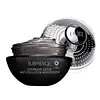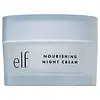What's inside
What's inside
 Key Ingredients
Key Ingredients

 Benefits
Benefits

 Concerns
Concerns

 Ingredients Side-by-side
Ingredients Side-by-side

Water
Skin ConditioningCyclopentasiloxane
EmollientPropanediol
SolventGlycerin
HumectantCyclohexasiloxane
EmollientPolysorbate 20
EmulsifyingDimethicone
EmollientSorbitol
HumectantCamellia Sinensis Leaf Extract
AntimicrobialCharcoal Powder
AbrasiveOleth-20
CleansingAcrylates/C10-30 Alkyl Acrylate Crosspolymer
Emulsion StabilisingTriethanolamine
BufferingButylene Glycol
HumectantPhenoxyethanol
PreservativeTocopheryl Acetate
AntioxidantDehydroacetic Acid
PreservativeBenzoic Acid
MaskingEthylhexylglycerin
Skin ConditioningHydrolyzed Viola Tricolor Extract
Skin ProtectingOphiopogon Japonicus Root Extract
Skin ConditioningDisodium EDTA
Aloe Barbadensis Leaf Juice
Skin ConditioningAlteromonas Ferment Extract
Skin ConditioningSodium Hyaluronate
HumectantSaccharomyces/Iron Ferment
Skin ConditioningSaccharomyces/Magnesium Ferment
Saccharomyces/Copper Ferment
Skin ConditioningSaccharomyces/Silicon Ferment
Skin ConditioningSaccharomyces/Zinc Ferment
Skin ConditioningWater, Cyclopentasiloxane, Propanediol, Glycerin, Cyclohexasiloxane, Polysorbate 20, Dimethicone, Sorbitol, Camellia Sinensis Leaf Extract, Charcoal Powder, Oleth-20, Acrylates/C10-30 Alkyl Acrylate Crosspolymer, Triethanolamine, Butylene Glycol, Phenoxyethanol, Tocopheryl Acetate, Dehydroacetic Acid, Benzoic Acid, Ethylhexylglycerin, Hydrolyzed Viola Tricolor Extract, Ophiopogon Japonicus Root Extract, Disodium EDTA, Aloe Barbadensis Leaf Juice, Alteromonas Ferment Extract, Sodium Hyaluronate, Saccharomyces/Iron Ferment, Saccharomyces/Magnesium Ferment, Saccharomyces/Copper Ferment, Saccharomyces/Silicon Ferment, Saccharomyces/Zinc Ferment
Water
Skin ConditioningDimethicone
EmollientButylene Glycol
HumectantEthylhexyl Palmitate
EmollientHydrogenated Polyisobutene
EmollientButyrospermum Parkii Butter
Skin ConditioningSimmondsia Chinensis Seed Oil
EmollientGlycerin
HumectantCetearyl Olivate
Sorbitan Olivate
EmulsifyingAloe Barbadensis Leaf Extract
EmollientCucumis Sativus Fruit Extract
EmollientCetearyl Alcohol
EmollientStearic Acid
CleansingDimethiconol
EmollientXanthan Gum
EmulsifyingSodium Hyaluronate
HumectantTriethanolamine
BufferingAcrylates/C10-30 Alkyl Acrylate Crosspolymer
Emulsion StabilisingTocopheryl Acetate
AntioxidantSodium Dehydroacetate
PreservativeSaccharum Officinarum Extract
MoisturisingVaccinium Myrtillus Fruit/Leaf Extract
AstringentCitrus Sinensis Fruit Extract
AntioxidantCitrus Limon Fruit Extract
MaskingDisodium EDTA
Phenoxyethanol
PreservativeCaprylyl Glycol
EmollientWater, Dimethicone, Butylene Glycol, Ethylhexyl Palmitate, Hydrogenated Polyisobutene, Butyrospermum Parkii Butter, Simmondsia Chinensis Seed Oil, Glycerin, Cetearyl Olivate, Sorbitan Olivate, Aloe Barbadensis Leaf Extract, Cucumis Sativus Fruit Extract, Cetearyl Alcohol, Stearic Acid, Dimethiconol, Xanthan Gum, Sodium Hyaluronate, Triethanolamine, Acrylates/C10-30 Alkyl Acrylate Crosspolymer, Tocopheryl Acetate, Sodium Dehydroacetate, Saccharum Officinarum Extract, Vaccinium Myrtillus Fruit/Leaf Extract, Citrus Sinensis Fruit Extract, Citrus Limon Fruit Extract, Disodium EDTA, Phenoxyethanol, Caprylyl Glycol
Ingredients Explained
These ingredients are found in both products.
Ingredients higher up in an ingredient list are typically present in a larger amount.
Acrylates/C10-30 Alkyl Acrylate Crosspolymer is a synthetic polymer. It is used to thicken and improve the texture of products. Due to its properties, it can prevent water and oil ingredients from separating.
Butylene Glycol (or BG) is used within cosmetic products for a few different reasons:
Overall, Butylene Glycol is a safe and well-rounded ingredient that works well with other ingredients.
Though this ingredient works well with most skin types, some people with sensitive skin may experience a reaction such as allergic rashes, closed comedones, or itchiness.
Learn more about Butylene GlycolDimethicone is a type of synthetic silicone created from natural materials such as quartz.
What it does:
Dimethicone comes in different viscosities:
Depending on the viscosity, dimethicone has different properties.
Ingredients lists don't always show which type is used, so we recommend reaching out to the brand if you have questions about the viscosity.
This ingredient is unlikely to cause irritation because it does not get absorbed into skin. However, people with silicone allergies should be careful about using this ingredient.
Note: Dimethicone may contribute to pilling. This is because it is not oil or water soluble, so pilling may occur when layered with products. When mixed with heavy oils in a formula, the outcome is also quite greasy.
Learn more about DimethiconeDisodium EDTA plays a role in making products more stable by aiding other preservatives.
It is a chelating agent, meaning it neutralizes metal ions that may be found in a product.
Disodium EDTA is a salt of edetic acid and is found to be safe in cosmetic ingredients.
Learn more about Disodium EDTAGlycerin is already naturally found in your skin. It helps moisturize and protect your skin.
A study from 2016 found glycerin to be more effective as a humectant than AHAs and hyaluronic acid.
As a humectant, it helps the skin stay hydrated by pulling moisture to your skin. The low molecular weight of glycerin allows it to pull moisture into the deeper layers of your skin.
Hydrated skin improves your skin barrier; Your skin barrier helps protect against irritants and bacteria.
Glycerin has also been found to have antimicrobial and antiviral properties. Due to these properties, glycerin is often used in wound and burn treatments.
In cosmetics, glycerin is usually derived from plants such as soybean or palm. However, it can also be sourced from animals, such as tallow or animal fat.
This ingredient is organic, colorless, odorless, and non-toxic.
Glycerin is the name for this ingredient in American English. British English uses Glycerol/Glycerine.
Learn more about GlycerinPhenoxyethanol is a preservative that has germicide, antimicrobial, and aromatic properties. Studies show that phenoxyethanol can prevent microbial growth. By itself, it has a scent that is similar to that of a rose.
It's often used in formulations along with Caprylyl Glycol to preserve the shelf life of products.
Sodium Hyaluronate is hyaluronic acid's salt form. It is commonly derived from the sodium salt of hyaluronic acid.
Like hyaluronic acid, it is great at holding water and acts as a humectant. This makes it a great skin hydrating ingredient.
Sodium Hyaluronate is naturally occurring in our bodies and is mostly found in eye fluid and joints.
These are some other common types of Hyaluronic Acid:
Learn more about Sodium HyaluronateTocopheryl Acetate is AKA Vitamin E. It is an antioxidant and protects your skin from free radicals. Free radicals damage the skin by breaking down collagen.
One study found using Tocopheryl Acetate with Vitamin C decreased the number of sunburned cells.
Tocopheryl Acetate is commonly found in both skincare and dietary supplements.
Learn more about Tocopheryl AcetateTriethanolamine is an emulsifier and pH adjuster. It is created using ethylene oxide and ammonia. This gives Triethanolamine a nitrogen core and a similar scent to ammonia.
As an emulsifier, it prevents ingredients from separating and enhances texture by adding volume to a product.
PH adjusters are common in cosmetic products. The pH of a product can affect the effectiveness of other ingredients. A product with a high pH may also irritate the skin.
Learn more about TriethanolamineWater. It's the most common cosmetic ingredient of all. You'll usually see it at the top of ingredient lists, meaning that it makes up the largest part of the product.
So why is it so popular? Water most often acts as a solvent - this means that it helps dissolve other ingredients into the formulation.
You'll also recognize water as that liquid we all need to stay alive. If you see this, drink a glass of water. Stay hydrated!
Learn more about Water